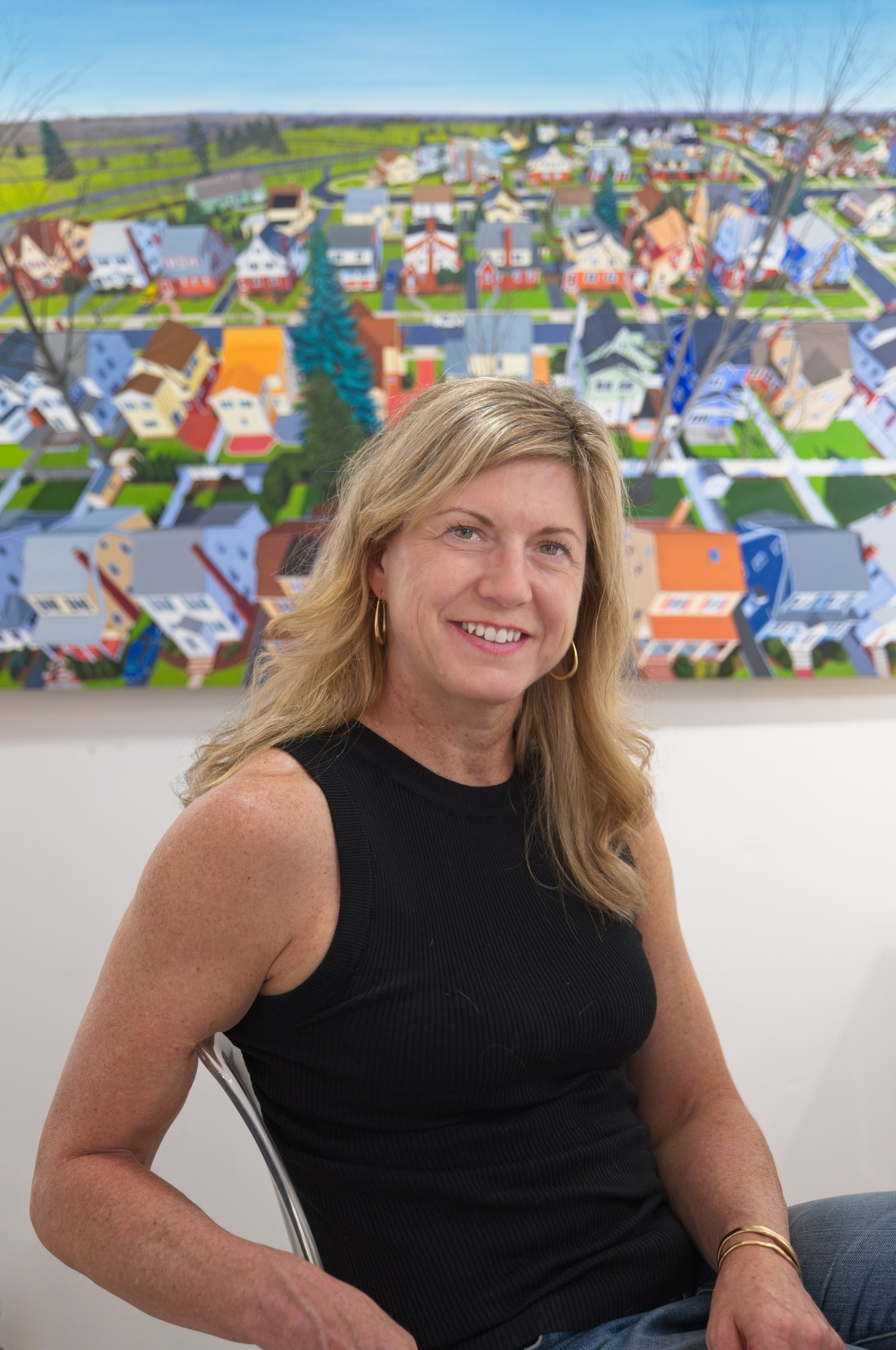For more than a decade the source material for my work has been the homes and neighborhoods in which I have lived from Wisconsin to Brooklyn to New Jersey. I have focused on domestic spaces – medicine cabinets, refrigerators, and closets – and narrowed in on individual objects. At times the paintings are interiors, viewed through a mirror or window, and at others it’s the exterior façade of my home or street views of the neighborhood.
Through this material I’ve explored a series of ideas that interest me. One is the desire to control our surrounding environment. My work investigates our desire to not only capture and record the minutiae of life, but to idealize and stylize each and every detail. Photography has long-enabled us to hold time still, but the ubiquity of camera phones and publishing platforms such as social media lead us more and more to obsessively stage our lives for both ourselves and others.
This staging applies to the technical approach and construction of the work as well as how space is manipulated. The spaces in these pieces are carefully arranged from what objects are included to how these objects are placed. In my paintings I usually create a grid and then carefully plot how lines and edges fall within the picture plane. The purposeful and exacting presentation of the imagery fits directly with the importance of formal considerations in the work. The obsessive use of details add to the heightened feeling of anxiety present in many of these pieces.
This obsessiveness carries over to my interest is the notion of public and private space. My most recent pieces involve the use of a drone camera. The use of the drone camera itself is socially loaded, as their increasing prominence has led them to be viewed both as tools of aggression and everyday leisure activity. Drones have become a symbol of our collective declining privacy, as illustrated by the way the images lay bare both the physical and socioeconomic elements of the neighborhood via the meticulous capture of homes, cars, swimming pools, and outdoor furniture. Conversely, the details included in the drawings can also be viewed from a perspective of being representative and somewhat generic. The houses and cars in this neighborhood could be most anywhere, and as a result do little to tell us about the families who remain out-of-sight.
This dichotomy ties directly to ideas of identity and memory. For example, individual objects and plants can draw specific associations to time and place. What conclusions do we draw from the objects people possess and consume, what do these remind us about our own lives? The belongings of others may or may not inform associations of social class, gender, age, or ethnicity. Different objects can draw specific associations to time and place or memories. Often objects seen as banal may be looked at through a different lens.
Just as we carefully attempt to manipulate others’ perception of us, so too do I wish to curate the viewer’s perception of my subject matter. There is a searching that takes place traveling above and around these spaces, sometimes drawn closer to observe plants, a swimming pool, or patio chairs, and other times pulling back to focus more on the pattern of rooftops or gridwork of yards. Details of the familiar or mundane aspects of life are given equal importance, from cars that are left abandoned on the street to individual leaves and roof shingles. Ultimately the viewer is presented with an abundance of information that is carefully organized and staged.
